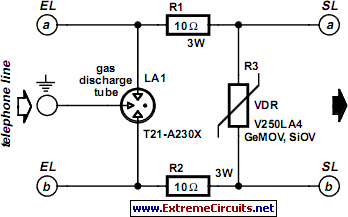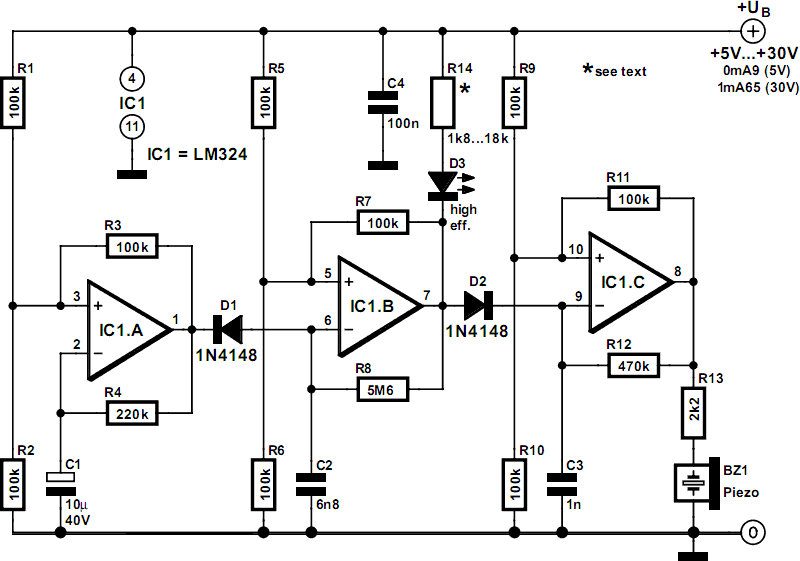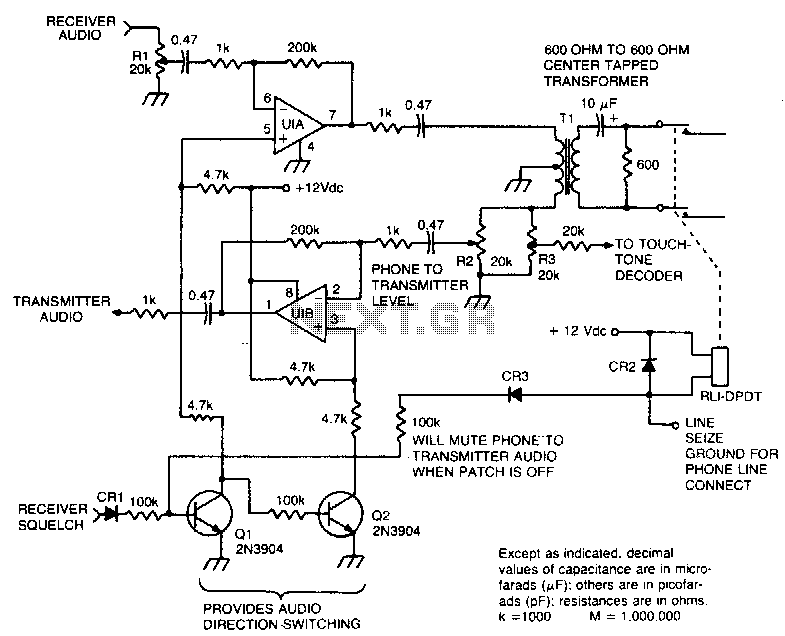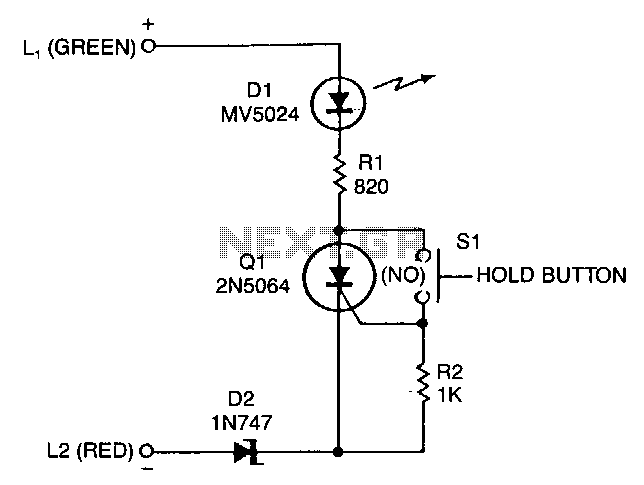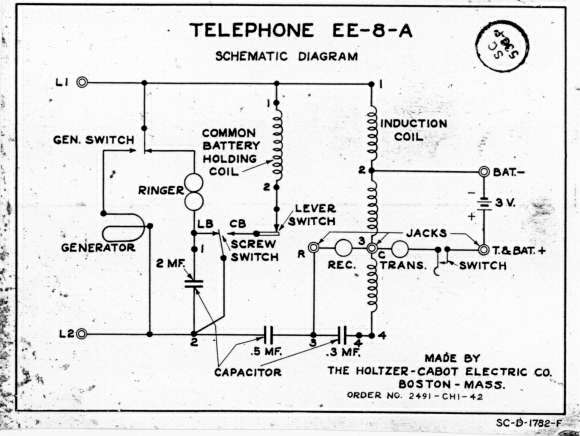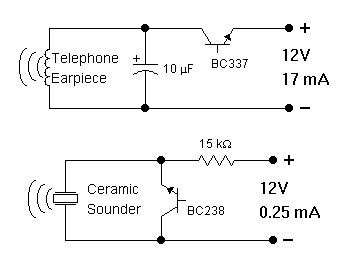
Telephone Silencer
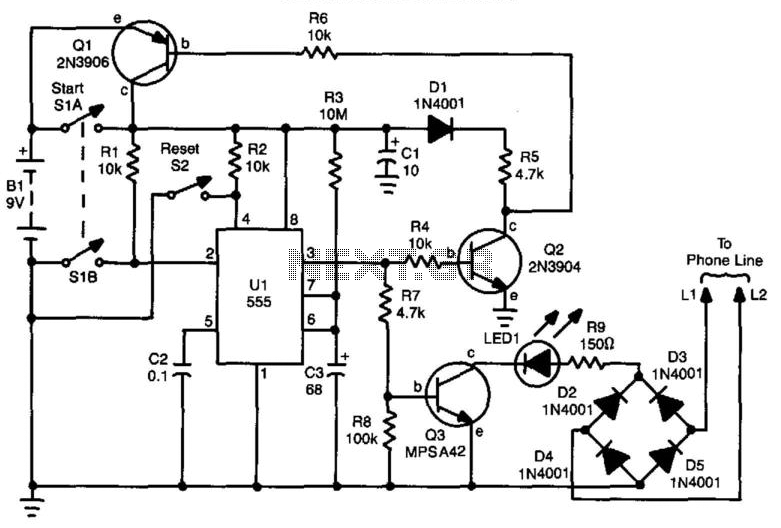
If a user is busy and cannot answer or does not wish to answer their phone, this circuit will emit a busy signal without requiring the phone to be left off the hook. After a predetermined duration, the circuit automatically deactivates. U1 functions as an astable multivibrator, which can be configured for a time interval of up to 10 minutes by adjusting the values of R3 and C3. When switch SI A is pressed, U1 is activated, and Q1 latches, providing power to the circuit. Upon reaching the time interval set by R3 and C3, Q2 and Q3 will cut off power to the circuit. During operation, S3 connects a 150-ohm resistor across the phone line, simulating an off-hook condition.
This circuit design utilizes an astable multivibrator configuration, implemented with operational amplifier U1, to generate a continuous square wave output. The timing components, resistor R3 and capacitor C3, define the duration for which the busy signal is to be maintained. The values of R3 and C3 can be calculated using the standard astable multivibrator formula, allowing for precise control over the timing interval, which can be set to a maximum of 10 minutes.
The operation begins when switch SI A is engaged, initiating the oscillation of U1. This action also triggers transistor Q1, which acts as a latch to keep the circuit powered during the timing interval. The latching mechanism ensures that the busy signal is maintained even if SI A is released before the timing cycle is complete.
As the timing interval approaches completion, the output from U1 will eventually deactivate, leading to the cutoff of power through transistors Q2 and Q3. This design allows for a seamless transition back to the normal state of the phone line, ensuring that the user can resume regular phone operations without manual intervention.
Additionally, switch S3 plays a critical role in simulating the off-hook condition by placing a 150-ohm resistor across the phone line. This mimics the electrical characteristics of a phone that is off the hook, thereby generating a busy signal for incoming callers. The use of a resistor rather than a relay or more complex switching mechanism contributes to the simplicity and reliability of the circuit.
Overall, this busy signal generator circuit is an effective solution for users who need to manage incoming calls without direct interaction, providing both convenience and functionality. If you are busy and cannot answer or do not wish to answer your phone, this circuit will give a busy signal without you having to leave the phone off the hook. After a predetermined time, the circuit is deactivated. U1 forms an astable multivibrator that can be set for a time up to 10 minutes by values of R3 and C3. When SI A is depressed, U1 starts, and Ql latches, which powers the circuit. At the end of a time interval determined by R3 and C3, Q2 and Q3 cut off and remove power from the circuit.
During the operation, S3 throws a 150- resistor across the phone line, which simulates an off-hook condition. 🔗 External reference
This circuit design utilizes an astable multivibrator configuration, implemented with operational amplifier U1, to generate a continuous square wave output. The timing components, resistor R3 and capacitor C3, define the duration for which the busy signal is to be maintained. The values of R3 and C3 can be calculated using the standard astable multivibrator formula, allowing for precise control over the timing interval, which can be set to a maximum of 10 minutes.
The operation begins when switch SI A is engaged, initiating the oscillation of U1. This action also triggers transistor Q1, which acts as a latch to keep the circuit powered during the timing interval. The latching mechanism ensures that the busy signal is maintained even if SI A is released before the timing cycle is complete.
As the timing interval approaches completion, the output from U1 will eventually deactivate, leading to the cutoff of power through transistors Q2 and Q3. This design allows for a seamless transition back to the normal state of the phone line, ensuring that the user can resume regular phone operations without manual intervention.
Additionally, switch S3 plays a critical role in simulating the off-hook condition by placing a 150-ohm resistor across the phone line. This mimics the electrical characteristics of a phone that is off the hook, thereby generating a busy signal for incoming callers. The use of a resistor rather than a relay or more complex switching mechanism contributes to the simplicity and reliability of the circuit.
Overall, this busy signal generator circuit is an effective solution for users who need to manage incoming calls without direct interaction, providing both convenience and functionality. If you are busy and cannot answer or do not wish to answer your phone, this circuit will give a busy signal without you having to leave the phone off the hook. After a predetermined time, the circuit is deactivated. U1 forms an astable multivibrator that can be set for a time up to 10 minutes by values of R3 and C3. When SI A is depressed, U1 starts, and Ql latches, which powers the circuit. At the end of a time interval determined by R3 and C3, Q2 and Q3 cut off and remove power from the circuit.
During the operation, S3 throws a 150- resistor across the phone line, which simulates an off-hook condition. 🔗 External reference
